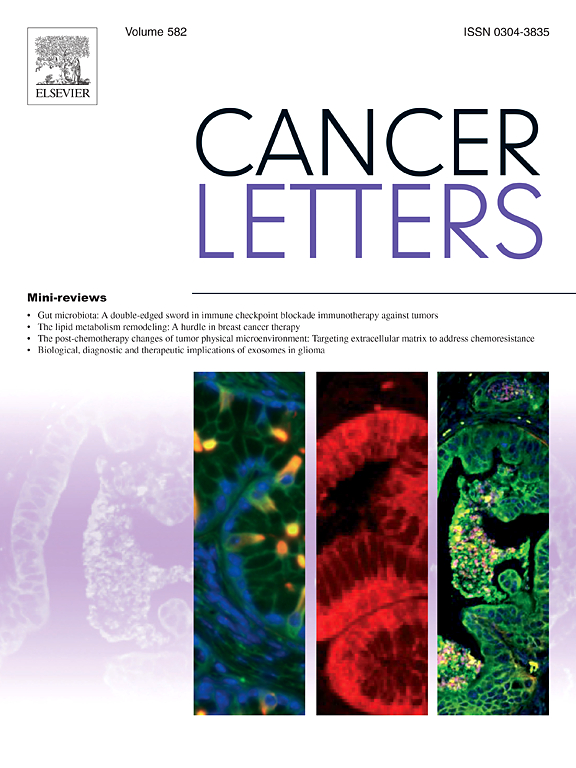单细胞转录组分析发现,组织特异性成纤维细胞是不同来源腹膜转移中髓系细胞的主要调节因子。
IF 9.1
1区 医学
Q1 ONCOLOGY
引用次数: 0
摘要
结直肠癌(CRC)腹膜转移(CPM)与有限的治疗选择和不良预后有关。虽然基质细胞大量浸润大多数cpm,但其微环境中不同类型细胞之间的相互作用尚不清楚。在这里,我们使用单细胞RNA测序研究了CPM和CRC患者的肿瘤和远处正常组织。对细胞间输入和输出信号的研究表明,成纤维细胞主导着CPM信号,髓细胞是它们最强的相互作用伙伴。通过免疫组织化学,我们证实了成纤维细胞与巨噬细胞在CPM微环境中共定位。在共培养实验中,仅在CPM和正常腹膜中检测到的成纤维细胞亚群显示出免疫调节特性,并进一步在卵巢和胃源性腹膜恶性肿瘤中检测到。这种新型成纤维细胞类型及其与巨噬细胞的交流可能是CPM和潜在的腹膜表面恶性肿瘤治疗干预的有吸引力的靶点。本文章由计算机程序翻译,如有差异,请以英文原文为准。
Single-cell transcriptomic analysis identifies tissue-specific fibroblasts as the main modulators of myeloid cells in peritoneal metastasis of different origin
Colorectal cancer (CRC) peritoneal metastasis (CPM) is related to limited therapy options and poor prognosis. Although stromal cells heavily infiltrate most CPMs, interactions between different cell types in their microenvironment remain unclear. Here, we investigated tumor and distant normal tissue from CPM and CRC patients using single-cell RNA sequencing. Investigating the incoming and outgoing signals between cells revealed that fibroblasts dominate the CPM signaling landscape with myeloid cells as their strongest interaction partner. Using immunohistochemistry, we confirmed that fibroblasts co-localize with macrophages in the CPM microenvironment. A fibroblast sub-population detected only in CPM and normal peritoneum demonstrated immunoregulatory properties in co-culture experiments, and was further detected in additional peritoneal malignancies derived from ovarian and gastric origin. This novel fibroblast type and its communication with macrophages could be attractive targets for therapeutic interventions in CPM and potentially peritoneal surface malignancies in general.
求助全文
通过发布文献求助,成功后即可免费获取论文全文。
去求助
来源期刊

Cancer letters
医学-肿瘤学
CiteScore
17.70
自引率
2.10%
发文量
427
审稿时长
15 days
期刊介绍:
Cancer Letters is a reputable international journal that serves as a platform for significant and original contributions in cancer research. The journal welcomes both full-length articles and Mini Reviews in the wide-ranging field of basic and translational oncology. Furthermore, it frequently presents Special Issues that shed light on current and topical areas in cancer research.
Cancer Letters is highly interested in various fundamental aspects that can cater to a diverse readership. These areas include the molecular genetics and cell biology of cancer, radiation biology, molecular pathology, hormones and cancer, viral oncology, metastasis, and chemoprevention. The journal actively focuses on experimental therapeutics, particularly the advancement of targeted therapies for personalized cancer medicine, such as metronomic chemotherapy.
By publishing groundbreaking research and promoting advancements in cancer treatments, Cancer Letters aims to actively contribute to the fight against cancer and the improvement of patient outcomes.
 求助内容:
求助内容: 应助结果提醒方式:
应助结果提醒方式:


